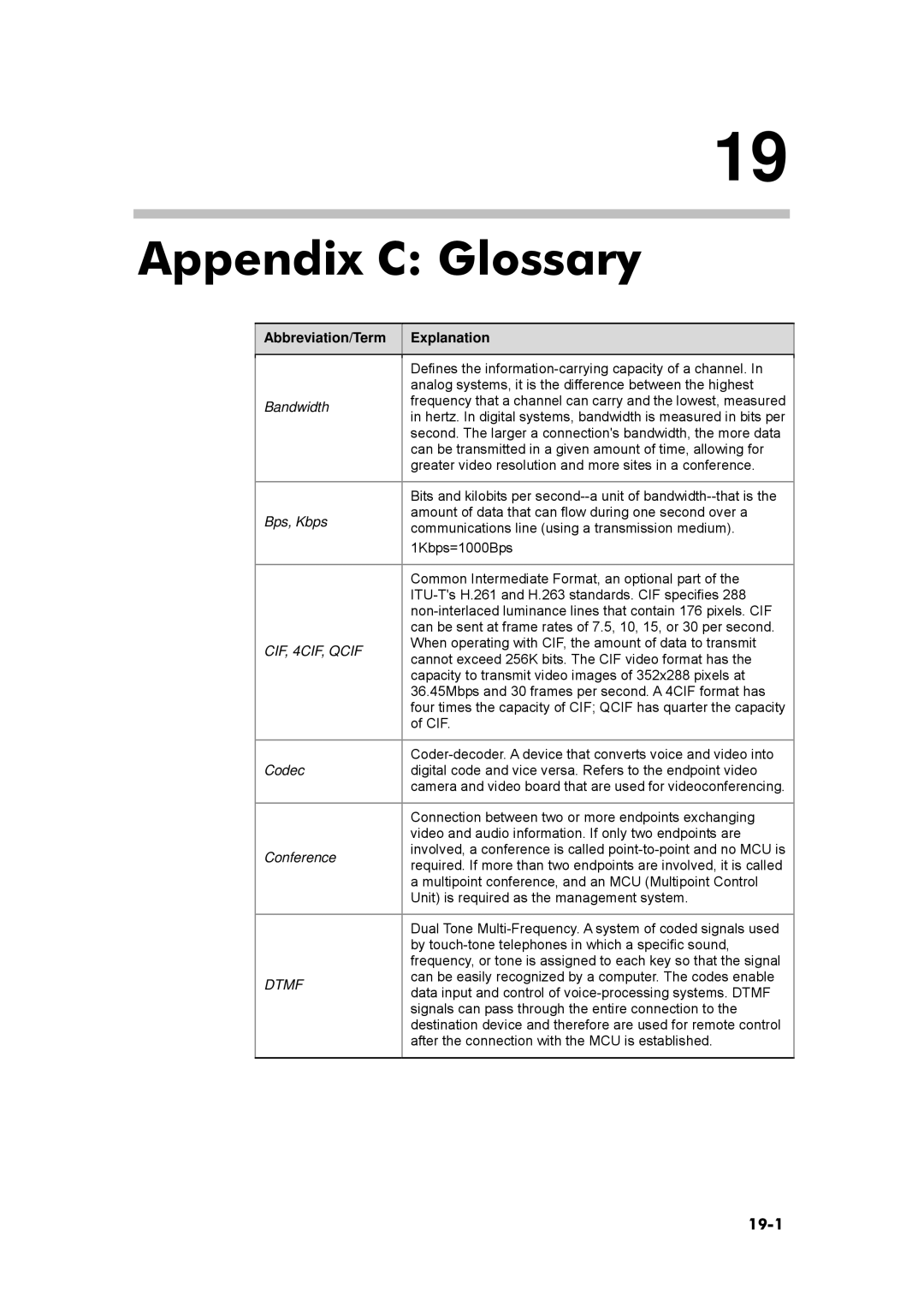
19
Appendix C: Glossary
Abbreviation/Term
Explanation
| Defines the | |
| analog systems, it is the difference between the highest | |
Bandwidth | frequency that a channel can carry and the lowest, measured | |
in hertz. In digital systems, bandwidth is measured in bits per | ||
| ||
| second. The larger a connection's bandwidth, the more data | |
| can be transmitted in a given amount of time, allowing for | |
| greater video resolution and more sites in a conference. | |
|
| |
| Bits and kilobits per | |
Bps, Kbps | amount of data that can flow during one second over a | |
communications line (using a transmission medium). | ||
| ||
| 1Kbps=1000Bps | |
|
| |
| Common Intermediate Format, an optional part of the | |
| ||
| ||
| can be sent at frame rates of 7.5, 10, 15, or 30 per second. | |
CIF, 4CIF, QCIF | When operating with CIF, the amount of data to transmit | |
cannot exceed 256K bits. The CIF video format has the | ||
| ||
| capacity to transmit video images of 352x288 pixels at | |
| 36.45Mbps and 30 frames per second. A 4CIF format has | |
| four times the capacity of CIF; QCIF has quarter the capacity | |
| of CIF. | |
|
| |
| ||
Codec | digital code and vice versa. Refers to the endpoint video | |
| camera and video board that are used for videoconferencing. | |
|
| |
| Connection between two or more endpoints exchanging | |
| video and audio information. If only two endpoints are | |
Conference | involved, a conference is called | |
required. If more than two endpoints are involved, it is called | ||
| ||
| a multipoint conference, and an MCU (Multipoint Control | |
| Unit) is required as the management system. | |
|
| |
| Dual Tone | |
| by | |
| frequency, or tone is assigned to each key so that the signal | |
DTMF | can be easily recognized by a computer. The codes enable | |
data input and control of | ||
| ||
| signals can pass through the entire connection to the | |
| destination device and therefore are used for remote control | |
| after the connection with the MCU is established. | |
|
|
